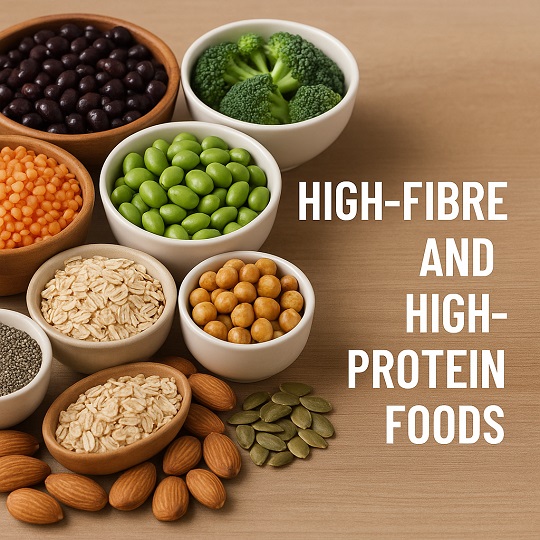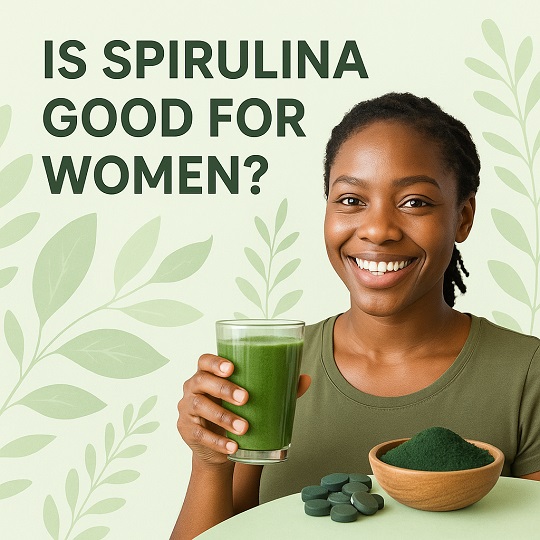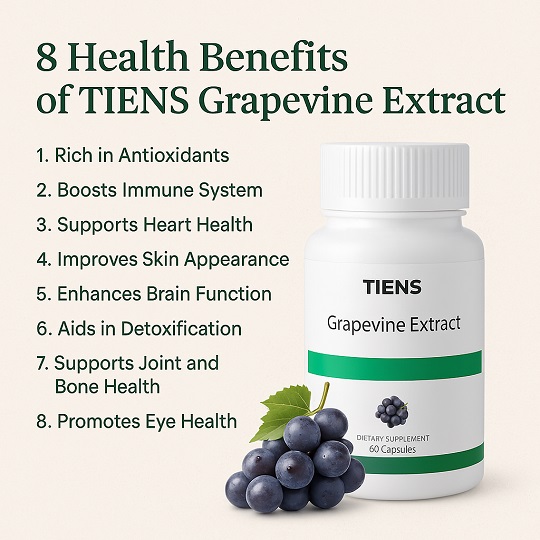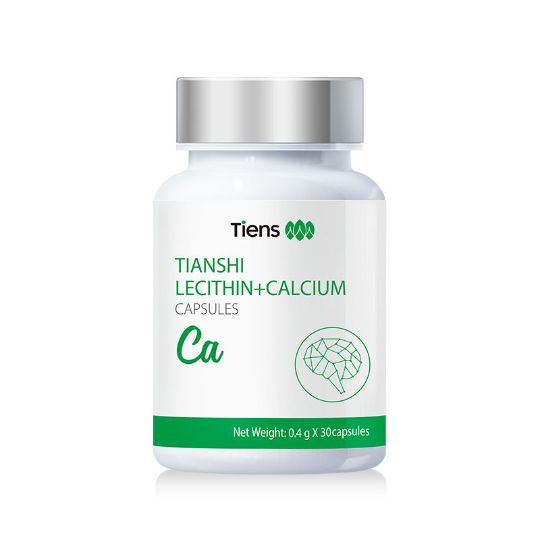
High-Fibre and High-Protein Foods for a Healthy Lifestyle
High-Fibre and High-Protein Foods for a Healthy Lifestyle. Maintaining a healthy diet is essential for overall wellness, weight management, and chronic disease prevention. Two key nutrients that stand out for their health benefits are fibre and protein. When consumed in the right balance, high-fibre and high-protein foods support digestion, muscle maintenance, satiety, and metabolic function.
In this article, we’ll explore the benefits of a diet rich in fibre and protein, provide a list of top high-fibre and high-protein foods, and offer tips on incorporating them into your daily meals.
Why Fibre and Protein Matter
The Importance of Dietary Fibre
Dietary fibre is a type of carbohydrate that the body can’t digest. It plays a vital role in:
- Digestive health: Fibre promotes regular bowel movements and prevents constipation.
- Weight control: High-fibre foods increase feelings of fullness, reducing overall calorie intake.
- Blood sugar regulation: Soluble fibre slows glucose absorption, improving insulin sensitivity.
- Heart health: Fibre helps reduce LDL (bad) cholesterol, lowering the risk of heart disease.
There are two types of fibre:
- Soluble fibre: Found in oats, beans, and fruits. It dissolves in water and forms a gel-like substance.
- Insoluble fibre: Found in whole grains and vegetables. It adds bulk to stool and supports gut health.
The Power of Protein
Protein is crucial for building and repairing tissues, especially muscles, skin, and enzymes. Key benefits include:
- Muscle maintenance: Essential for recovery and muscle growth, especially after exercise.
- Satiety and weight loss: Protein keeps you full for longer, reducing cravings and late-night snacking.
- Metabolic boost: Digesting protein burns more calories compared to fats or carbs.
- Immune support: Proteins are vital for building antibodies and fighting infections.
Best High-Fibre and High-Protein Foods
Here’s a list of nutrient-rich foods that are high in both fibre and protein, making them ideal for a healthy diet.
1. Lentils
- Fibre: ~15 grams per cooked cup
- Protein: ~18 grams per cooked cup
Lentils are a powerhouse legume that supports heart and digestive health. They’re budget-friendly and can be added to soups, stews, or salads.
2. Chickpeas (Garbanzo Beans)
- Fibre: ~12 grams per cooked cup
- Protein: ~15 grams per cooked cup
Perfect for hummus, curries, or roasted snacks, chickpeas are a versatile way to boost protein and fibre intake.
3. Quinoa
- Fibre: ~5 grams per cooked cup
- Protein: ~8 grams per cooked cup
Quinoa is a gluten-free grain that contains all nine essential amino acids, making it a complete protein source.
4. Black Beans
- Fibre: ~15 grams per cup
- Protein: ~15 grams per cup
Rich in antioxidants, black beans are excellent for gut health and blood sugar control.
5. Edamame (Young Soybeans)
- Fibre: ~8 grams per cup
- Protein: ~17 grams per cup
These green soybeans are rich in plant-based protein and fibre. Enjoy them as a snack or in stir-fries.
6. Oats
- Fibre: ~4 grams per half-cup (dry)
- Protein: ~5 grams per half-cup (dry)
Oats are packed with beta-glucan, a soluble fibre that supports heart health. Combine with chia seeds for a powerful breakfast.
7. Chia Seeds
- Fibre: ~10 grams per ounce
- Protein: ~5 grams per ounce
Chia seeds absorb water and expand in your stomach, making you feel full. Add them to smoothies, yoghurts, or overnight oats.
8. Almonds
- Fibre: ~3.5 grams per ounce
- Protein: ~6 grams per ounce
These crunchy nuts are rich in healthy fats, protein, and fibre. They’re great for snacks or salad toppings.
9. Pumpkin Seeds (Pepitas)
- Fibre: ~1.7 grams per ounce
- Protein: ~7 grams per ounce
These seeds are rich in magnesium and zinc, supporting muscle function and immunity.
10. Broccoli
- Fibre: ~5 grams per cup (cooked)
- Protein: ~4 grams per cup
This cruciferous vegetable is packed with antioxidants and supports digestion and detoxification.
Combining Fibre and Protein in Meals
Pairing fibre and protein can help stabilize blood sugar levels and increase fullness. Here are a few ideas:
Breakfast
- Overnight oats with chia seeds, almond milk, and berries
- Smoothie with Greek yoghurt, spinach, flaxseeds, and protein powder
Lunch
- Quinoa salad with black beans, avocado, cherry tomatoes, and olive oil
- Lentil soup with whole-grain bread
Dinner
- Grilled chicken or tofu with roasted Brussels sprouts and sweet potatoes
- Stir-fry with edamame, broccoli, brown rice, and sesame seeds
Snacks
- Almond butter on whole-grain toast
- Hummus with carrot and cucumber sticks
- Roasted chickpeas with paprika
Tips for Increasing Fibre and Protein Intake
- Start slow: If you’re increasing fibre, do it gradually to prevent bloating or gas.
- Drink plenty of water: Fibre needs water to move smoothly through your digestive tract.
- Prioritize whole foods: Choose whole grains, legumes, fruits, and vegetables over processed options.
- Plan your meals: Keep protein-rich snacks and fibre-dense ingredients on hand to make healthy eating easier.
- Use plant-based proteins: Beans, lentils, and seeds are excellent for both nutrients and suitable for vegetarian diets.
Health Benefits of a Fibre and Protein-Rich Diet
Incorporating more high-fibre and high-protein foods into your diet can help:
- Improve weight management by increasing satiety
- Regulate blood sugar levels, reducing the risk of type 2 diabetes
- Reduce inflammation and improve gut microbiome diversity
- Lower cholesterol and blood pressure
- Support muscle repair and immune function
Conclusion
A diet rich in both fibre and protein is one of the most effective ways to support overall health. From beans and seeds to whole grains and leafy greens, there are countless delicious and easy ways to increase your intake. Whether your goal is to lose weight, improve digestion, or build muscle, these nutrient-packed foods can help you reach your wellness goals.
Start today by incorporating a few of the foods mentioned above into your meals, and enjoy the lasting benefits of a high-fibre, high-protein lifestyle.
References
- U.S. Department of Agriculture (USDA). (2020). FoodData Central. Retrieved from: https://fdc.nal.usda.gov
- Harvard T.H. Chan School of Public Health. (n.d.). The Nutrition Source – Protein. Retrieved from: https://www.hsph.harvard.edu/nutritionsource/what-should-you-eat/protein
- Harvard T.H. Chan School of Public Health. (n.d.). Fiber. Retrieved from: https://www.hsph.harvard.edu/nutritionsource/carbohydrates/fiber
- Mayo Clinic. (2022). Dietary Fiber: Essential for a Healthy Diet. Retrieved from: https://www.mayoclinic.org/healthy-lifestyle/nutrition-and-healthy-eating/in-depth/fiber/art-20043983
- National Institutes of Health (NIH). (2021). Protein and Health. Retrieved from: https://ods.od.nih.gov/factsheets/Protein-HealthProfessional
- World Health Organization (WHO). (2023). Healthy Diet Fact Sheet. Retrieved from: https://www.who.int/news-room/fact-sheets/detail/healthy-diet
- Academy of Nutrition and Dietetics. (2020). Protein: Myths and Facts. Retrieved from: https://www.eatright.org/food/nutrition/dietary-guidelines-and-myplate/protein-and-the-athlete
- U.S. Food and Drug Administration (FDA). (2021). Daily Value on the Nutrition and Supplement Facts Labels. Retrieved from: https://www.fda.gov
- Cleveland Clinic. (2021). High-Fiber Foods You Should Be Eating. Retrieved from: https://health.clevelandclinic.org/11-high-fiber-foods-you-should-be-eating
- American Heart Association. (2021). The Benefits of Fiber in Your Diet. Retrieved from: https://www.heart.org/en/healthy-living/healthy-eating/eat-smart/nutrition-basics/fiber





